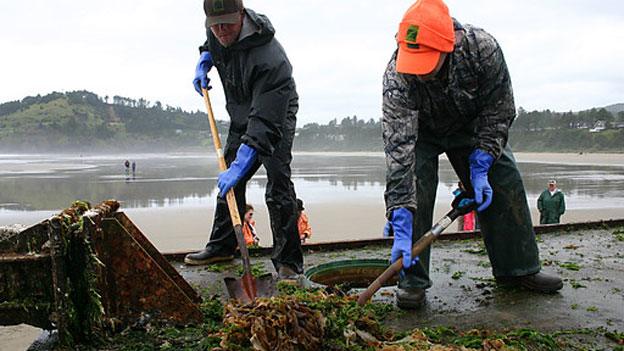Japan's tsunami debris: Five remarkable stories
- Published

It was a gloomy, grey day in the middle of the Pacific Ocean in the summer of 2012. There was a small white blip, persistent on the horizon.
At first they thought it was a whale, but as they got closer they realised it was a large abandoned fishing boat with Japanese characters on the side.
"That is when everything changed. This belonged to someone, this is someone's property," recalls Marcus Eriksen, a marine conservationist who led a 2012 expedition to survey the vast volume of debris cast into the ocean by a massive earthquake-triggered tsunami that hit Japan's north-eastern coast on 11 March 2011.
The disaster killed almost 16,000 people and saw a vast amount of material washed out to sea - about 20 million tonnes, the Japanese government has estimated.
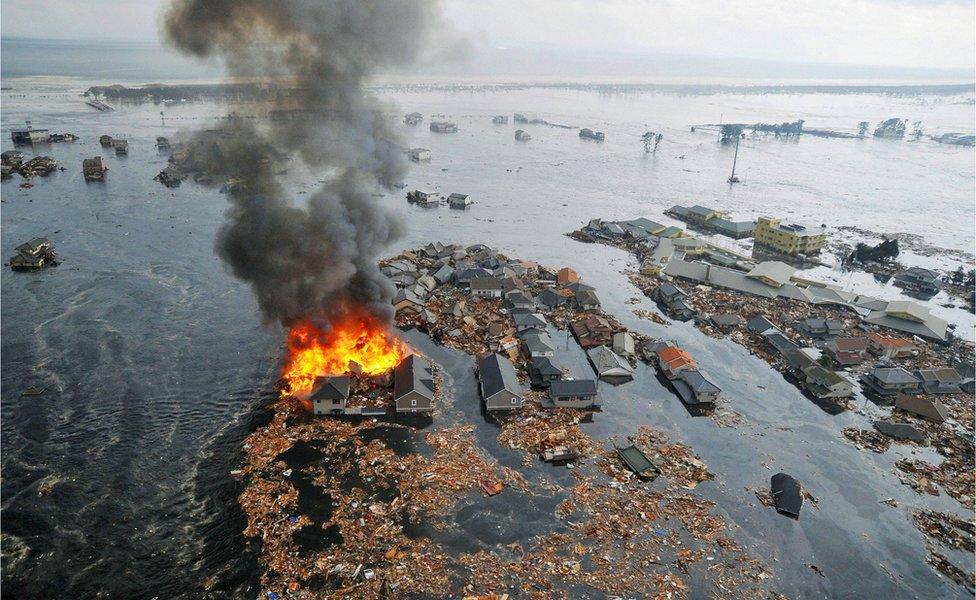
Whole towns were washed away in the disaster
Much of it sank, but five years on some of it is still washing up along the North American coast, from Alaska to Hawaii. Since September 2015, 64 items have been washed ashore and officially identified as tsunami debris.
The National Oceanic and Atmospheric Administration (NOAA) Marine Debris Programme has worked closely with the Japanese government, through local consulates, to identify these items. In the years since the disaster there have been extraordinary stories of objects washing up on these distant shores, some of which have later been reconciled with their owners.

Motorcycle

A Harley-Davidson motorcycle was found on Graham Island, in British Columbia in Canada, in the container that its Japanese owner, Ikio Yokohama, had used to store it back in Japan.
Peter Mark, the man who discovered it in April 2012, realised it had a Japanese number plate attached and might be tsunami debris, and so it was traced.
Ikio Yokoyama: "When I looked at the picture he took, I knew immediately it was my bike"
After considering offers to ship the bike back to Japan to be restored, its owner decided it should be exhibited, external at the Harley-Davidson Museum in Milwaukee, USA, as a memorial to those whose lives were touched by the disaster.
Mr Yokoyama lost several family members himself in the tsunami.

Village sign
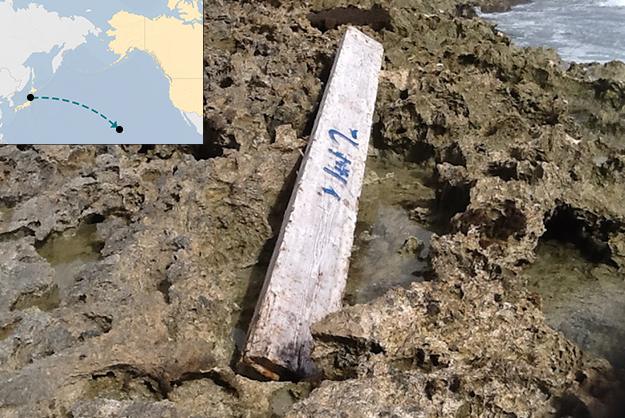
Tanohata village was devastated by the 2011 earthquake and tsunami. Much of the town in Iwate prefecture was swept out into the ocean.
Among that sea of debris was a wooden sign. Nearly three metres (10 feet) long, it bore the name of the wooden apartment building it came from - "Shimanokoshi village housing".
It was found in October 2013, some 6,000 km (3,728 miles) away, on Kahuku Beach, Oahu Island, Hawaii. And in July 2014 it was flown home.
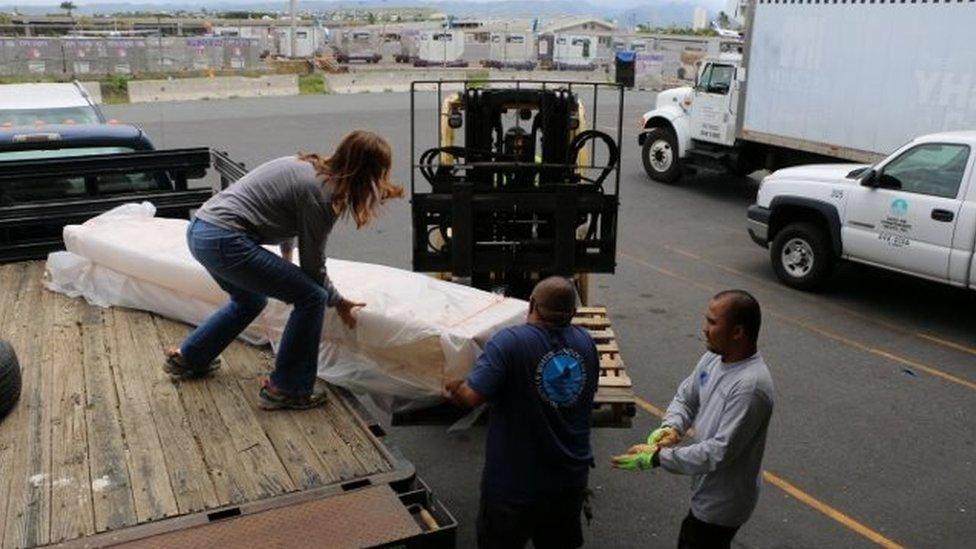
US state and federal authorities co-operated in the return of the sign
With its return, the people of the village "are slowly but surely walking on the path to recovery as a united body", said its mayor, Hiroshi Ishihara.
The village has exhibited the sign, as a reminder for future generations.

Football

Misaki Murakami, 16, lost everything he owned when the tsunami swept away his home in Rikuzentakata.
But little more than a year later, on the shores of Middleton Island, Alaska, David and Yumi Baxter found a football that he had been given by classmates when he moved schools several years before. Being Japanese, Ms Baxter was able to translate the name, school and "good luck" message on the ball, helping to reunite it with its owner.
Survivor talks about recovering football taken to Alaska after tsunami
"I was shocked, but also I've yet to recover a single one of my belongings, so I'm really happy about this," said Misaki on recovering the ball.

Rowing boat

A rowing boat, or skiff, was found on 7 April 2013 on the shores of Crescent City, California.
The boat, called Kamome (Seagull), belonged to a high school in Rikuzentakata, which was completely flattened, external by the wave that hit the town just over two years before.
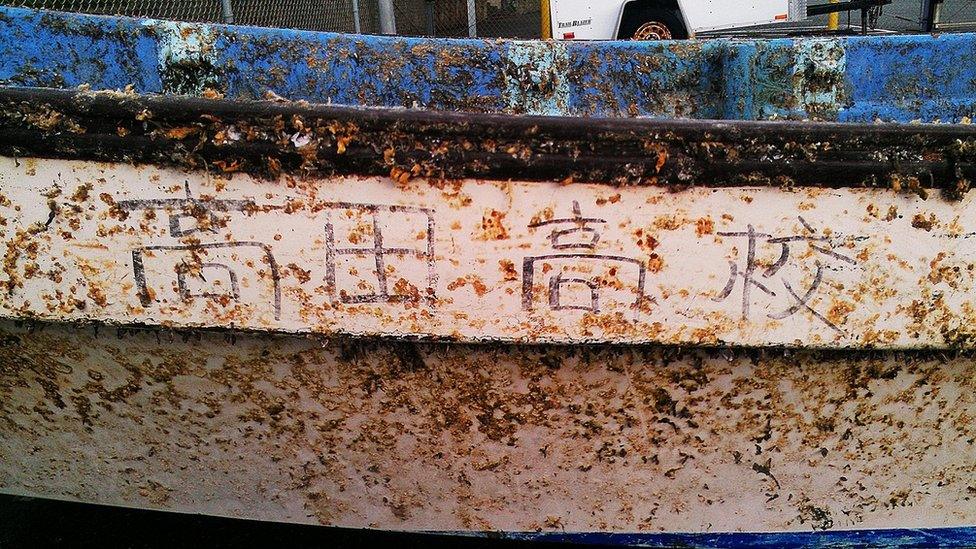
Cleaning it of the barnacles that covered it, pupils at Del Norte High School, external worked with officials in Japan and the US to ship it home.
The two schools arranged exchange visits and formally became sister schools. The story of the boat, and the links it helped forge, has even been told in a bilingual illustrated book, external for young children.

Fishing boat

One piece of debris which was especially visible, but could not be salvaged, was the crewless "ghost ship", which was first spotted off the coast of the Canadian province of British Columbia on 23 March 2012, slowly drifting in a maritime transport corridor.
Because of the risk the 164-foot (50-metre) Ryou-Un Maru posed to other shipping, and the difficulties of salvaging it, authorities were left with little choice but to scuttle it.
The squid fishing vessel was sunk about 314 km (195 miles) from Sitka, Alaska, by naval cannon fire.
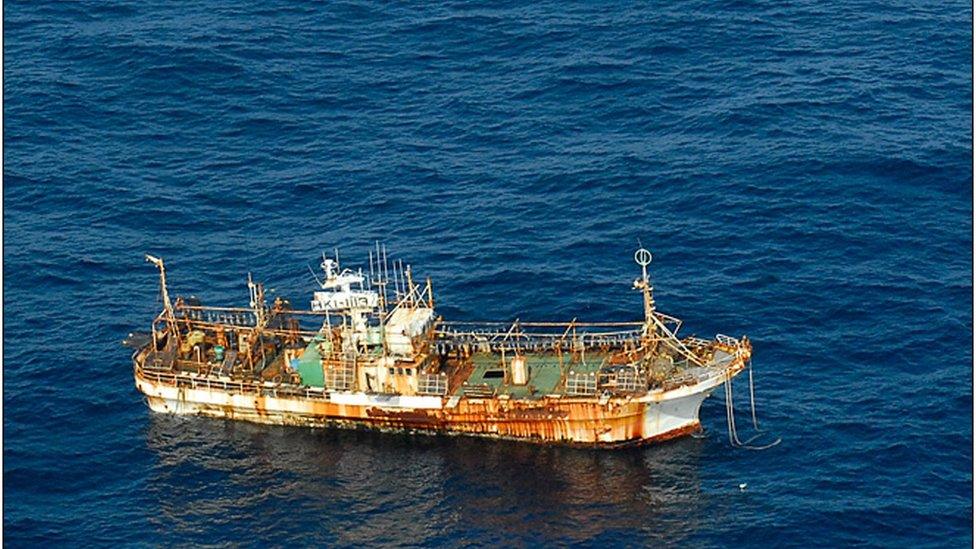
It took several bursts of cannon fire to sink the ship

While the biggest items have received the most attention, the vast majority of the debris was smaller, and is getting gradually more so the longer it is at sea.
It is also makes up a large proportion of what remains in the Pacific, as much of it is entirely or mostly sub-surface debris. The items submerged below the water line can only be moved by currents. Some of these items have accumulated in an area called the Great Pacific Garbage Patch, a long-standing collection of marine debris.
So the impact of the tsunami is still being felt and measured thousands of miles away from its original focus. People find the objects, scientists log them, oceanographers model them and conservationists assess their impact.
With every object that is found, scientists are given an opportunity to learn more about currents, winds and ocean flow, but the debris also tells stories about the lives touched by the 2011 tsunami.
Images courtesy of NOAA, external
Reporting by Simeon Paterson
- Published2 May 2012
- Published22 February 2012
- Published15 July 2015
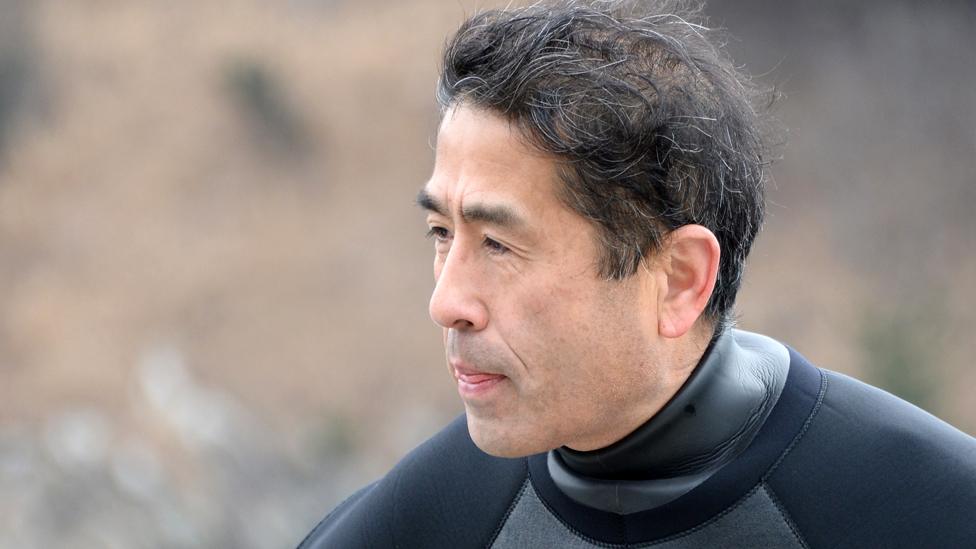
- Published17 May 2013
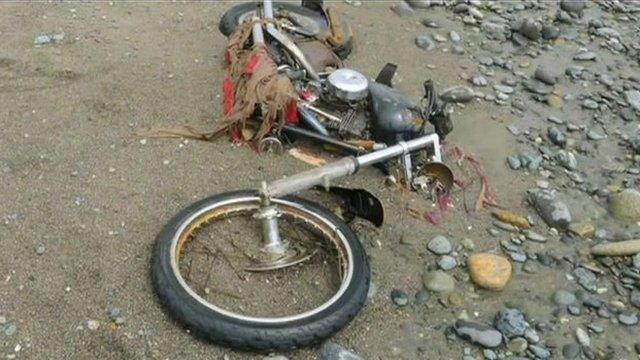
- Published9 October 2012
